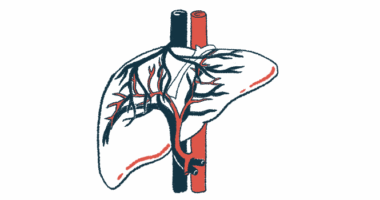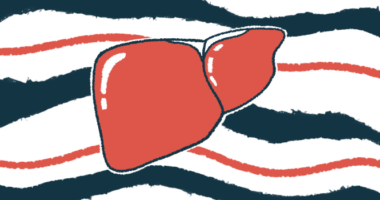Better to have Kasai surgery before liver transplant for biliary atresia
Fewer complications seen afterward for infants who had both procedures

For infants with biliary atresia, undergoing standard Kasai surgery — a procedure to restore the flow of the digestive fluid bile in the body — before a liver transplant appears to be associated not only with a better pretransplant general condition but also with fewer posttransplant complications than having a liver transplant alone.
That’s according to the findings of a study in China that compared features and outcomes between 150 babies who underwent the Kasai procedure before a liver transplant and 75 infants who had the transplant alone.
While no significant differences were found in terms of posttransplant liver function recovery, the researchers noted that better outcomes were seen among babies having both procedures in terms of infections and damage to arteries. Further, the operating times were significantly shorter for infants who first had Kasai surgery, the data showed.
Given these results, the researchers recommended that “the treatment of BA [biliary atresia] should follow [Kasai-liver transplant] sequential treatment combined with individualized treatment plans to achieve better [pretransplant] general condition and reduce the incidence of postoperative complications.”
Their study, “Sequential treatment strategy for biliary atresia: Kasai hepatoportoenterostomy-liver transplantation: a single-center retrospective comparative cohort study,” was published in the journal BMC Pediatrics.
Biliary atresia is a rare liver disease that affects infants, which occurs when the ducts (tubes) that carry bile from the liver to the small intestine are blocked or absent. This reduces or halts the flow of bile — a condition known as cholestasis — and results in the buildup of bile in the liver, which can cause serious damage to the organ.
Kasai surgery is typically the first treatment for infants with biliary atresia
The first-line biliary atresia treatment is a surgical procedure called a Kasai portoenterostomy. The surgery aims to restore bile flow by creating an alternate route into the small intestine that bypasses the blocked ducts.
For those who don’t fully respond to the Kasai procedure or have severe liver scarring (cirrhosis), a liver transplant then becomes the only therapeutic option.
“However, there is ongoing debate regarding whether patients should undergo pLT [primary liver transplant] as a first-line treatment or proceed with the Kasai-LT [Kasai-liver transplant] treatment,” the researchers wrote.
Some studies “have shown that the [five]-year survival rate for BA patients undergoing Kasai-LT treatment ranges from 82-98%,” but others, conversely, suggest “that patients receiving pLT treatment may have better long-term survival outcomes,” the team noted.
To learn more, a research team from West China Hospital at Sichuan University in Chengdu set out to compare the pretransplant general conditions and posttransplant outcomes of infants undergoing a Kasai procedure before a liver transplant versus those undergoing a liver transplant alone.
The team retrospectively reviewed the clinical data of 225 infants with biliary atresia who underwent a liver transplant at their clinic from January 2018 to January 2025. Among them, 150 had the Kasai procedure before the transplant — and were thus dubbed the Kasai-LT group — while 75 had the transplant alone (the LT group).
These infants were matched as much as possible between groups in terms of certain demographic and clinical features. Still, at the time of liver transplant, the children in the Kasai-LT group were significantly older (mean of 12.43 vs. 7.74 months) and weighed significantly more (mean of 9.14 vs. 6.44 kg, or about 20.25 vs. 14.20 lbs) than those in the LT group.
Better outcomes seen after liver transplant for babies having both surgeries
The data showed that infants who’d had the Kasai procedure before liver transplant had significantly lower blood levels of two biomarkers of liver damage, the AST/platelet ratio and gamma-glutamyltransferase, than those who underwent just the transplant. Likewise, having had the Kasai procedure was associated with a significantly reduced Pediatric End-Stage Liver Disease score, indicating a reduction in liver disease severity.
The Kasai-LT group also had significantly shorter operating times during the transplant, shorter stays in the pediatric intensive care unit and in the hospital, and lower hospitalization costs, the data showed.
No significant group differences were found in terms of other surgery-related factors, such as surgical blood loss, liver transplant types (living or deceased donor), parts of the donor liver used for transplant, surgical approaches, or immunosuppressive regimens.
The researchers noted that they found no statistically significant differences in posttransplant liver function recovery between the two groups after one week.
However, in terms of posttransplant complications, infants who underwent the Kasai procedure were significantly less likely to experience damage to the arteries in the liver and infections in the chest and abdomen.
[Kasai surgery] can increase the rate of jaundice clearance, delay liver [scarring] progression, and postpone [the need for a liver transplant] procedure to a more suitable age, thereby creating better general conditions for [liver transplant].
Moreover, a greater proportion of infants in the Kasai-LT group were alive after five years relative to those in the LT group (94.4% vs. 88.1%), although this difference failed to reach statistical significance. Similarly, the five-year survival of the transplanted liver was slightly higher in the Kasai-LT group (89.3% vs. 86.8%), though again, without reaching statistical significance.
“The treatment of BA should follow Kasai-LT sequential treatment to achieve better pretransplantation general condition and reduce the incidence of postoperative complications,” the researchers concluded based on these findings.
The team noted that Kasai surgery “can increase the rate of jaundice clearance, delay liver [scarring] progression, and postpone [the need for the] LT procedure to a more suitable age, thereby creating better general conditions for LT.” Jaundice refers to a yellowing of the skin and white parts of the eyes that occurs frequently with liver damage.
Still, according to the researchers, individualized treatment is key, as some infants “may require early LT due to factors such as not undergoing [the Kasai] procedure, poor efficacy from [the Kasai] procedure, or recurrent severe cholangitis [bile duct inflammation].”








